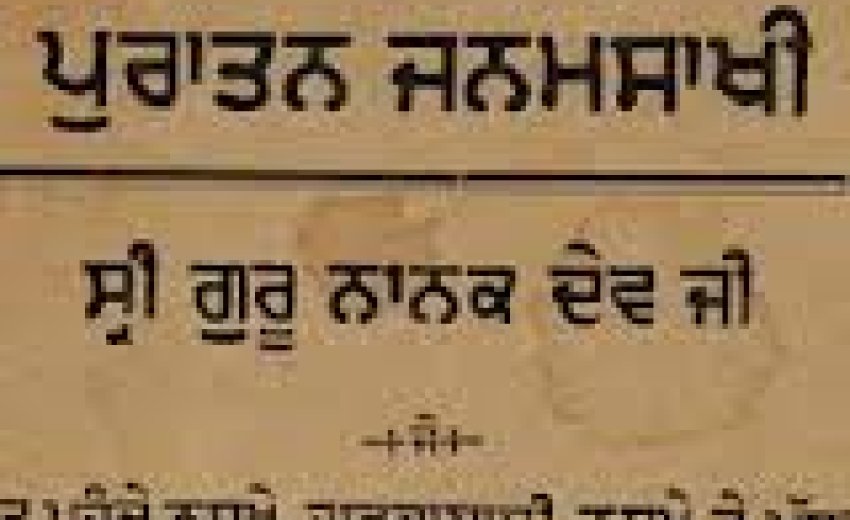 There has been a controversy about the date of birth of Guru Nanak. Traditionally it is believed that Guru Nanak was born in the month of Katik(October-November) on the pooranmashi (full moon) night in 1469 and hence Sikhs all over the world celebrate Guru Nanak's birthday in Katik(October-November). Modern scholars, however, do not accept this date. Their research reveals that he was born in the month of Baisakh (April) in 1469.
There has been a controversy about the date of birth of Guru Nanak. Traditionally it is believed that Guru Nanak was born in the month of Katik(October-November) on the pooranmashi (full moon) night in 1469 and hence Sikhs all over the world celebrate Guru Nanak's birthday in Katik(October-November). Modern scholars, however, do not accept this date. Their research reveals that he was born in the month of Baisakh (April) in 1469.
Then the question is how did the celebrations start in Katik when he was born in Baisakh ?
Since there is no authentic source of the biography of Guru Nanak, scholars have built his life story from Janamsakhi literature. In the Bala Janamsakhi, it is recorded that Guru Nanak was born in Katik. It is so believed by many Sikh preachers that Bhai Bala, along with Bhai Mardana, was a companion of Guru Nanak in his travels and he wrote a janamsakhi at the behest of Guru Angad.
Bala Janamsakhi
Bala Janamsakhi written by some Gorakh Das appeared in 1658. At present it is in the private collection of Piare Lal Kapur in Delhi.(1). It was popular among the Sikhs and still is. Its most attractive feature to many is the miracles associated with Guru Nanak. The superstitious rural folk love to hear and believe such stories. In many paintings and old pictures Bala and Mardana are shown as companions of Guru Nanak in his travels. This leads many to believe Katik as the birth date of the Guru as given in the Bala Janamsakhi
Bala Janamsakhi has many flaws. It contains more reverence for Baba Hindal, father of sect’s founder, but puts down Guru Nanak. Even Bhai Santokh Singh who is perhaps the only heavy weight scholar to support Bala Janamsakhi admits Hindali influence and interpolation. Scholars point out that the language used in Bala tradition was not spoken in time of Guru Nanak. According to Hew McLeod, "A critical analysis of the linguistic characteristics of Bala and Puratan Janam Sakhis reveals that the language of the later is older than that of the Bala Janamsakhi , the language of the puratan is akin to that of Guru Granth”(2). Khushwant Singh also points out that the "language used in this (Bala) janamsakhi was not spoken at the time of Guru Nanak or Guru Angad, but was developed at least a hundred years later".(3). It contains such expressions as Wahe Guru ji ki Fateh which were used in time of Guru Gobind Singh ji. Some hymns ascribed to Guru Nanak in the Bala janamsakhi are not his but those of second and fifth gurus. It is claimed that Bala Sandhu was commissioned by Guru Angad to write the janamsakhi, but there is no historic evidence that they ever met or knew each other. There could be a Bala Sandhu as follower of Guru Nanak, not his companion in travels.
Bhai Gurdas who was so close to Baba Buddha, a contemporary of Guru Nanak, does not mention the name of Bala, though he gives a list of other devotees of the Guru in his Vars. There is a hymn of Mardana in Adi Granth, but nothing by Bala or about Bala.
Puratan Janamsakhi
Bala's name does not exist in Vilayatvali janamsakhi or the Colebrook janamsakhi, now preserved in the old India Office Library, London . The manuscript of Vilayatvali janamsakhi was taken to England in 1815 by Henry Thomas Colebrook (1765-1835), a Sanskrit scholar. He deposited the manuscript in East India Company's library. Dr. Earnest Trumpp, though wrote quite disparagingly about holy Guru Granth Sahib, gets the credit to be the first scholar to discover and examine it in 1872 on his return to Europe. He, however, found no reference to Bala in the Janamsakhi . "If Bala had been a constant companion of Guru Nanak...it would be quite incomprehensive why never a single allusion should have been made to him in old tradition", remarks Trumpp. Trumpp discredited Bala janamsakhi which gives Katik as date of Guru Nanak's birth. A few copies of the Colebrook janamsakhi were brought to Punjab in 1883 by its Lt. Governor Charles Aitchison at the petition of some Sikhs from Amritsar .
Prof. Gurmukh Singh, the celebrated leader of the Lahore Singh Sabha, found another janamsakhi at Hafizabad, now in Distt. Gujranwala in Pakistan . Gurmukh Singh loaned his find to Macauliffe who, having divided its unbroken lines into separate words, published the text privately in 1885. The version is variously known as the Hafizabad Janam Sakhi or as the Macauliffe vali Janam Sakhi. Its contents are quite close to the Colebrooke janamsakhi. These two manuscripts remain amongst the most important of the Puratan tradition.
Then Sikh historian Karam Singh found five more such manuscripts, one of these was dated 1733 A.D., all in agreement with the account contained in former two janam-sakhis (4). Equipped with so much evidence Karam Singh published his research in 1913 in his book, "Katik ke Baisakh". He found Bala Janamsakhis quite unreliable, proved that Bala was no companion of Guru Nanak and built a convincing case that Baisakh was the right date of birth of Guru Nanaka
Since it is older than the Bala Janamsakhi, it is called puratan (old) janamsakhi. There is however, some dispute about the origin of the puratan janamsakhi date. Kirpal Singh insists that it was written 1634, but Kahn Singh Nabha followed by Khushwant Singh and Gopal Singh claim that it was written in the last quart of the 16th century(1588) by Sewa Das. McLeod does not give an exact date, but puts it in time of Guru Arjan,"Its language and grammatical constructions show that this janam Sakhi must have bee written around the time of the compilation of Adi Guru Granth Sahib." This was also the time when Meharban Janamsakhi and Bhai Gurdas's first Var were written.
Meharban Janamsakhi :
Manohar Das Meharban was the son of Prithi Chand, eldest brother of Guru Arjan Dev. He had a mystique bent of mind, was very close to the fifth Guru and got his education and knowledge of Sikh tradition from Guru Arjan Dev. He also wrote a janamsakhi of Guru Nanak which some scholars say was even written before Bhai Gurdas composed his first Var. Contents of his janamsakhi are quite similar to the Puratan janamsakhi. McLeod claims that the death story of Guru Nanak in Bala janamsakhi is borrowed from Meharban tradition. Meharban also considers April as Guru Nanak's birth date.
Other evidence :
April as date of birth is mentioned in most other classical works such as Gyan Ratnavali(1712) of Bhai Mani Singh and Mehma Parkash(1776) of Sarup Das Bhalla,. Bhai Santokh Singh, in his monumental work Nanak Prakash(1823) accepts Katik Pooramashi as the date, yet he gives the total age as 70 years, 5 moths and 7 days. Karam Singh worked this age backwards from the death date of Guru Nanak and this brings his birth to mid- April to confirm that he was born in April.
Perhaps the most influential of all has been a conflation of the two, Colebrook and Hafizabad manuscripts, prepared by Bhai Vir Singh and published under the title Puratan Janam Sakhi ( Amritsar , 1926).[5]
Now all prominent historians such as M.A.Macauliffe, Hew McLeod, Kahn Singh Nabha, Indubhushan Banerji, Khushwant Singh, Kirpal Singh, Ganda Singh, Harbans Singh, H.R.Gupta and others accept account in puratan janamsakhi more reliable and April as the date of birth given there in.
Since tradition is strong in favor of Katik (November), the celebrations would continue in the same month, couple of weeks after Diwali, but we must be clear about our history. It has now been established that Guru Nanak was born on 15 Apr, 1469 C.E. Christ was also not born in December, though Christians by tradition celebrate his birth in December.
...........................
References :
- Kirpal Singh , Janam Sakhi Parampara. Patiala : Punjabi University , 1969
- Harbans Singh, Ed., Encyclopedia of Sikhism, Vol.1. Patiala : Punjabi University , 1992.
- Khushwant Singh , A History of Sikhs, Vol.1. New Delhi : Oxford University , 1999.
- McLeod, W. H. Ed., The B40 Janam-Sakhi. Amritsar ,, GNDU, 1980
- Harbans Singh, Guru Nanak and the Origins of the Sikh Faith. Delhi : Asia Publishing House, 1969.
--------------------------------------------------------------------------------------------
Maritime Sikh Society
10 Parkhill Road, Halifax, NS, Canada, B3P 1R3
Ph : (902)-477-0008

